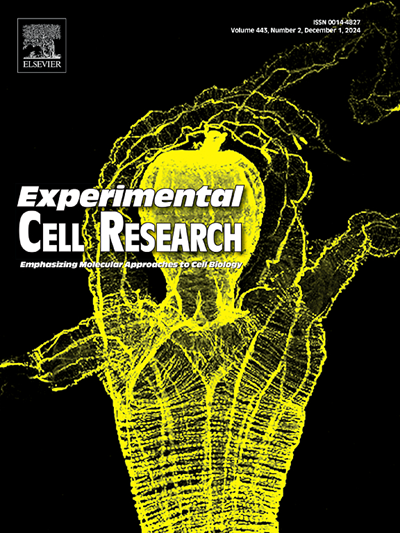Role of METTL3 in high glucose-induced trophoblast cell pyroptosis by the CEBPB/miR-96-5p/CCND2 axis via m6A modification
IF 3.5
3区 生物学
Q3 CELL BIOLOGY
引用次数: 0
Abstract
Gestational diabetes mellitus (GDM) is regarded as abnormally elevated glucose contents at pregnancy period. We attempt to explore the interaction of methyltransferase 3 (METTL3) in high glucose (HG)-treated trophoblast cell pyroptosis, thereby finding a new target for GDM treatment. HTR8/SVneo cells were stimulated using HG to establish GDM models for the following assessment of METTL3, CCAAT enhancer binding protein beta (CEBPB), microRNA (miR)-96-5p and cyclin D2 (CCND2). Levels of pyroptosis-related indicators were verified. m6A level in GDM and the enrichment of m6A on CEBPB were evaluated. The binding relation between CEBPB and miR-96-5p and between miR-96-5p and CCND2 were verified. Roles of METTL3 silencing, CEBPB overexpression, miR-96-5p silencing, and CCND2 overexpression in HG-induced trophoblast cell pyroptosis were detected. METTL3, CEBPB, and CCND2 were upregulated in GDM placenta tissues and HG-induced HTR8/SVneo cells, while miR-96-5p was downregulated. Levels of pyroptosis-related indicators were upregulated, which were counteracted upon METTL3 silencing. Mechanically, METTL3-mediated m6A modification promoted CEBPB expression, inhibited miR-96-5p, which targeted CCND2. CEBPB overexpression, miR-96-5p silencing, and CCND2 could neutralize the suppressive effect of METTL3 knockdown on HG-induced trophoblast cell pyroptosis. METTL3-mediated m6A modification promoted CEBPB expression to suppressmiR-96-5p expression and promote CCND2 expression, thus strengthening HG-induced trophoblast cell pyroptosis.
METTL3通过m6A修饰CEBPB/miR-96-5p/CCND2轴在高糖诱导的滋养细胞焦亡中的作用
妊娠期糖尿病(GDM)是指妊娠期葡萄糖含量异常升高。我们试图探索甲基转移酶3 (METTL3)在高糖(HG)处理的滋养细胞焦亡中的相互作用,从而寻找治疗GDM的新靶点。HG刺激HTR8/SVneo细胞建立GDM模型,随后评估METTL3、CCAAT增强子结合蛋白β (CEBPB)、microRNA (miR)-96-5p和cyclin D2 (CCND2)。验证了热腐相关指标的水平。测定了GDM中m6A的水平和CEBPB中m6A的富集程度。验证CEBPB与miR-96-5p、miR-96-5p与CCND2的结合关系。检测METTL3沉默、CEBPB过表达、miR-96-5p沉默和CCND2过表达在hg诱导的滋养细胞焦亡中的作用。在GDM胎盘组织和hg诱导的HTR8/SVneo细胞中,METTL3、CEBPB和CCND2上调,miR-96-5p下调。METTL3沉默后,与焦热相关的指标水平上调。mettl3介导的m6A修饰促进CEBPB表达,抑制靶向CCND2的miR-96-5p。CEBPB过表达、miR-96-5p沉默和CCND2可以中和METTL3敲低对hg诱导的滋养细胞焦亡的抑制作用。mettl3介导的m6A修饰促进CEBPB表达,抑制smir -96-5p表达,促进CCND2表达,从而加强hg诱导的滋养细胞焦亡。
本文章由计算机程序翻译,如有差异,请以英文原文为准。
求助全文
约1分钟内获得全文
求助全文
来源期刊

Experimental cell research
医学-细胞生物学
CiteScore
7.20
自引率
0.00%
发文量
295
审稿时长
30 days
期刊介绍:
Our scope includes but is not limited to areas such as: Chromosome biology; Chromatin and epigenetics; DNA repair; Gene regulation; Nuclear import-export; RNA processing; Non-coding RNAs; Organelle biology; The cytoskeleton; Intracellular trafficking; Cell-cell and cell-matrix interactions; Cell motility and migration; Cell proliferation; Cellular differentiation; Signal transduction; Programmed cell death.
 求助内容:
求助内容: 应助结果提醒方式:
应助结果提醒方式:


